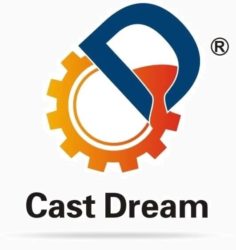Computer-aided Design (cad) is a strong technology that has revolutionized the style steel precision casting is performed. It has transformed the traditional manual design processinto a computer-based method, permitting manufacturers to generate more complex and accurate designs with greater ease and efficiency. in this article, we will discus the role of Computer-aided Design in steel precision casting and its benefits.
Improved Design Accuracy
One of the most significant advantages of using Cad in steel investment casting is the ability to develop more accurate designs. Cad software program allows designers to create 3d models of the component they want to cast, which can be analyzed and tested for potential problems before manufacturing. This helps manufacturers to identify and resolve design flaws early in the procedure, reducing the likelihood of costly errors and delays in the course of production.
Increased Design Complication
Cad on top allows manufacturers to create more complex designs that would be unattainable or difficult to reach using traditional approaches. this is simply because Cad software program provides designers with tools to create sophisticated geometries, patterns, and details that can be challenging to attain using manual techniques. This has opened up new choices for producing sophisticated and detailed components that would not get been feasible in the past.
Faster Time-to-market
Cad also speeds up the design procedure, reducing the period it requires to create and check new designs. This allows manufacturers to bring new products to sector more quickly, providing them a competitive edge in the marketplace. Cad on top enables designers to do changes to the design swiftly and very easily, allowing for rapid iterations and refinement of the design.
Increased Production Efficiency
Cad software also allows manufacturers to optimize the production procedure, reducing waste and improving efficiency. For example, it can be used to optimize the layout of parts in a casting to reduce material waste or to simulate the casting method to identify potential problems before production. This reduces the likelihood of costly mistakes and delays, improving the overall efficiency of the production process.
Enhanced Collaboration
Finally, Cad software program on top facilitates collaboration between designers, engineers, and more stakeholders involved in the production method. It allows for real-time sharing of design information and feedback, enabling teams to work each other more effectively and efficiently. This can begetting better communication, more successful problem-solving, and a more streamlined production process.
In conclusion, the role of Computer-aided design in steel precision casting cannot be overstated. It has transformed the style manufacturers approach design and production, permitting them to generate more accurate, complex, and efficient designs with greater ease and speed. As technology go on to advance, Cad will continue to play an increasingly significant role in the steel precision casting industry, driving revolution and helping manufacturers stay competitive in a rapidly changing marketplace.






